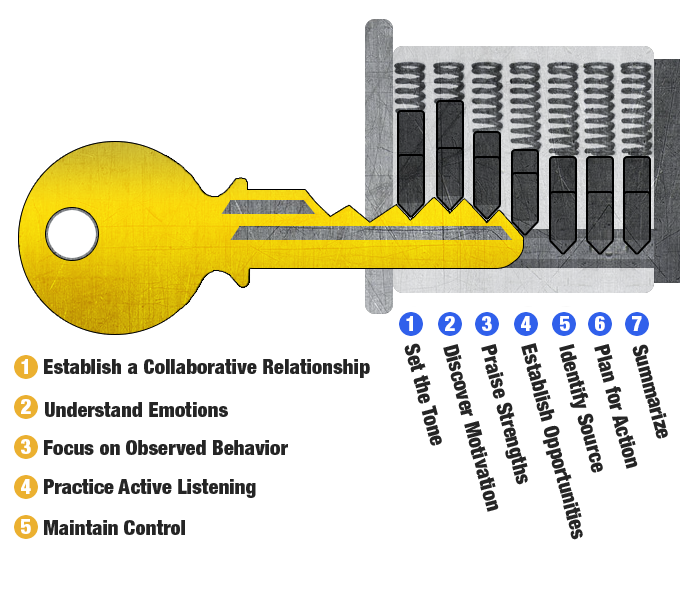Coaching for Improved Performance
Avoid the Expense of Unnecessary Terminations and Improve Productivity
$65 for Annual User License (group discounts available)
Free Trail or PurchaseClick here to watch a video about Coaching for Improved Performance.
Practice Coaching Our Virtual Role-Player and Build Skills
The SIMmersion Difference
Regardless of the coaching method used, effective coaching always involves (1) the activities around communicating information and (2) a way or style used to communicate that information. There are many free sources of information on both, including the one we provide. However, we remove any vagueness by enumerating 7 steps for actively communicating the information and 5 keys defining the way or style of that communication. Our 7 steps and 5 keys model share the concepts with many other models.
However, reading about how to coach is very different than having the skill to successfully coach an employee. We offer skill-building practice with our realistic virtual role-player, Brooke Lerner. We have selected a generic scenario, so while it may not match your specific needs, it offers the chance to practice applying the 7 step and 5 keys model and to build skills.
The Coaching Scenario
Brooke Lerner was assigned to your team three months ago. She's great with customers, but she disrupts meetings and misses deadlines. You need to help her make the needed changes.
Role-Player Brooke’s realistic emotions and personalities provide a different experience each time you practice coaching her.
Experience Brooke’s Six Different Personalities


- Argumentative alpha
- Passive aggressive victim
- Angry histrionic
- Apathetic underachiever
- Sensitive sycophant
- Blaming incompetent
Regardless of her variations, with successful coaching, she will commit to improving her performance. Let the five keys and seven steps coaching model be your guide to success.
Our Five Keys and Seven Steps Coaching Model Includes the Same Concepts of Most Other Models

A Brief Look at the Five Keys
-
Establish a Collaborative Relationship.
Asking for Brooke’s input and feedback during a discussion. Include Brooke in both the discovery and decision-making phases
-
Understand Emotions.
Validate Brooke’s emotions, by being prepared for Brooke to be defensive, withdrawn, angry, or even show superficial acceptance.
-
Focus on Observed Behavior.
Limit the conversation to objective behaviors you saw or heard and Utilize examples from your own observations
-
Practice Active Listening.
Demonstrate to Brooke that you heard and understood what she said by summarizing, paraphrasing, reflecting, and clarifying to convey your understanding
-
Maintain Control.
Ensure that all your talking points are addressed and help the Brooke manage her emotions. Avoid unnecessary tangents.
A Brief Look at the Seven Steps
-
Set The Tone
Set the tone by saying something positive; for example, “Good to see you, Brooke. I appreciate you taking the time to sit down with me.”
-
Discover Motivation
Ask about Career goals and Motivations at work.
-
Praise Strengths
Ask Brooke about her greatest strengths and confirm them. Ask about other strengths.
-
Establish Opportunities
Ask Brooke to identify opportunities for improvement
-
Identify Sources
Confirm or help Brooke determine the source of her Performance issues
-
Plan for Action
Ask Brooke for help in creating a plan to meet requirements
-
Summarize
Confirm mutually agreed-upon plans, gain buy-in that Brooke is committed, summarize the discussion, and schedule a follow-up meeting
SIMmersion's PeopleSim® Technology
During a conversation with Brooke, users select from a rich set of prompts. Each selected prompt typically has 5 to 15 available responses. The PeopleSim software calculates probabilities for each response and uses them to randomly choose one response. The calculations are based on one of her randomly selected personalities and the relationship the user has developed with her. The relationship between the user and Brooke will evolve in a way that depends on what the user says. Click here to read more about SIMmersion’s PeopleSim Technology. Click here to watch a video about SIMmersion’s PeopleSim Technology.
